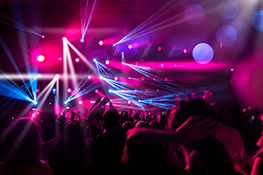The Stage Lighting Handbook: Everything You Need to Know
Understanding the Basics of Stage Lighting
Stage lighting is more than just illuminating a performance; it’s a crucial element in shaping mood, directing attention, and enhancing storytelling. This handbook will guide you through the essential aspects of stage lighting, from fundamental concepts to advanced techniques. We’ll cover everything you need to know, whether you’re a seasoned professional or just starting out.
Types of Stage Lighting Instruments
A diverse range of lighting instruments exists, each serving a unique purpose. Let’s explore some of the most common:
- Fresnel: Known for their soft, diffused light, Fresnels are ideal for washes and highlighting.
- Ellipsoidal Reflector Spotlight (ERS): Offering precise control and sharp beams, ERS lights are perfect for focusing on specific actors or objects.
- PAR Can: These robust lights produce intense beams, often used for backlighting and special effects.
- LED Lighting: Energy-efficient and versatile, LEDs offer a wide range of color temperatures and effects.
- Moving Heads: Automated fixtures providing dynamic movement and precise control, adding a professional touch to any production.
Color Temperature and Color Mixing
Understanding color temperature (measured in Kelvin) is crucial. Cooler temperatures (e.g., 5000K) produce bluish light, while warmer temperatures (e.g., 3200K) produce yellowish light. Mastering color mixing using gels or LED color mixing capabilities allows you to create the precise atmosphere for your production. We’ll delve into the nuances of color theory and its application in stage lighting.
Lighting Design Principles
Effective stage lighting relies on several key principles:
- Motivation: Light should appear to have a source within the scene’s context.
- Visibility: Ensuring all performers and important elements are clearly visible.
- Mood and Atmosphere: Using light to evoke specific emotions and enhance the overall tone.
- Focus and Emphasis: Highlighting key actors or elements to guide the audience’s attention.
- Composition and Balance: Creating visually appealing arrangements of light and shadow.
Lighting Control and Consoles
Controlling your lighting setup requires a lighting console. We’ll explore different types of consoles, from simple dimmers to sophisticated computer-controlled systems. We’ll discuss programming techniques, cueing, and the importance of effective control in achieving your lighting design.
Safety and Maintenance
Stage lighting involves working with powerful electrical equipment. Safety is paramount. We’ll cover essential safety procedures, including proper rigging techniques, handling of electrical cables, and the importance of regular maintenance to ensure the longevity and safe operation of your lighting equipment. We’ll also discuss regulations and best practices.
Advanced Lighting Techniques
Beyond the basics, we’ll explore more advanced techniques, including:
- Special Effects: Creating dynamic effects like fog, haze, and strobes.
- Gobos: Utilizing patterned gobos to project images and enhance visual interest.
- Light Plotting and Design Software: Using software to visualize and plan your lighting design before implementation.
Choosing the Right Equipment for Your Needs
The vast array of lighting equipment available can be overwhelming. This section provides guidance on selecting the right instruments, control systems, and accessories based on your specific needs, budget, and the scale of your production.
Conclusion
Mastering stage lighting is a journey of continuous learning. This handbook provides a solid foundation for understanding the intricacies of this essential theatrical art form. By understanding the principles outlined here and continually expanding your knowledge, you’ll be well-equipped to illuminate your productions with creativity and skill. Visit stagelights.in to browse our extensive range of high-quality stage lighting equipment.


 Auditorium Construction Services
Auditorium Construction Services 